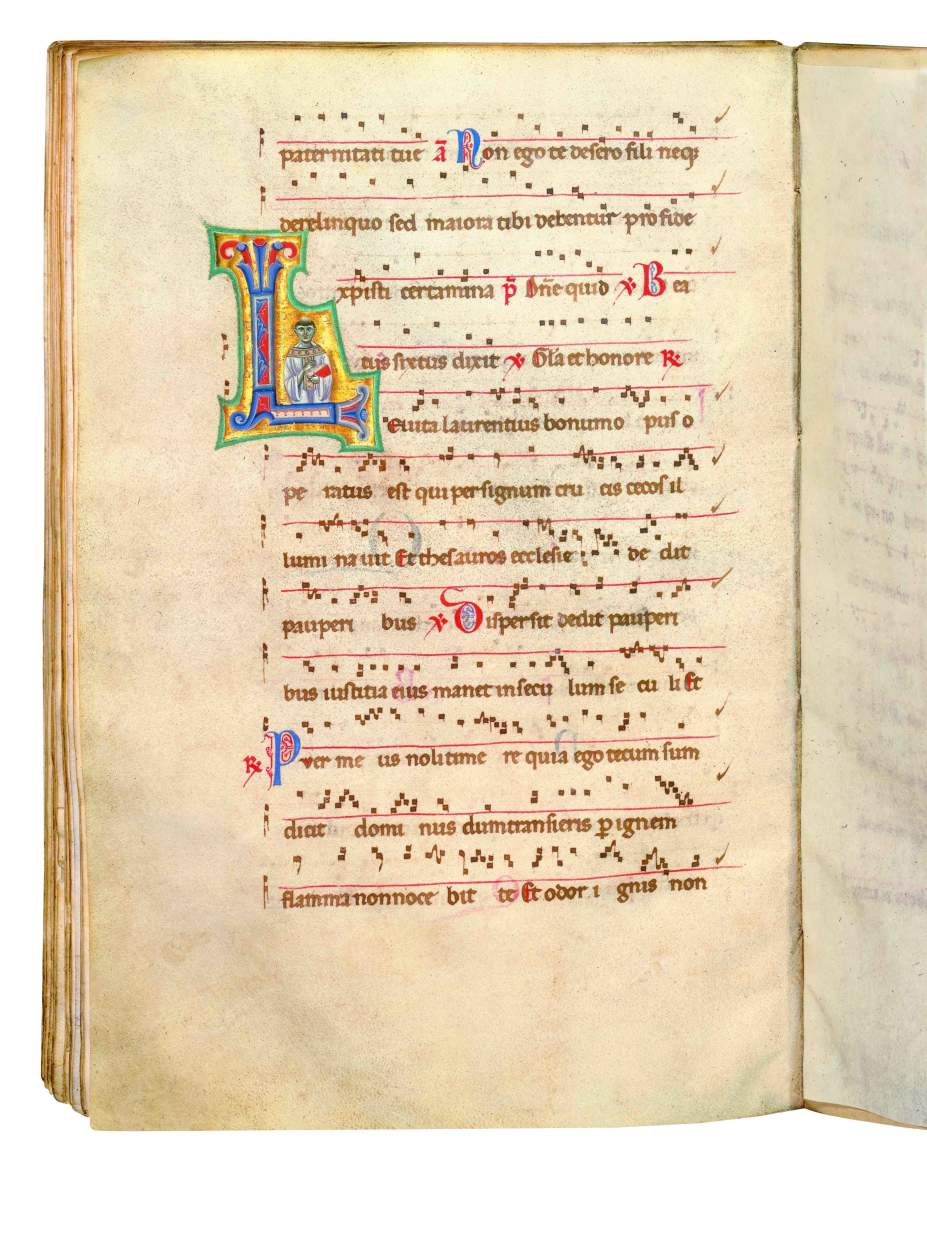

Antiphonary. Illuminated manuscript on vellum.
Italy, Venice, Liturgical Library of San Marco, circa 1250.
Hide caption

Antiphonary. Illuminated manuscript on vellum.
Italy, Venice, Liturgical Library of San Marco, circa 1250.
Hide caption

Antiphonary. Illuminated manuscript on vellum.
Italy, Venice, Liturgical Library of San Marco, circa 1250.
Hide caption

Antiphonary. Illuminated manuscript on vellum.
Italy, Venice, Liturgical Library of San Marco, circa 1250.
Hide caption

Antiphonary. Illuminated manuscript on vellum.
Italy, Venice, Liturgical Library of San Marco, circa 1250.
Hide caption
This Antiphonary contains offices of all important saints traditionally venerated in Venice: St. Giorgio, St. Mark, St. Ermacora and St. Fortunato, SS. Eufemia, Tecla and Dorothea, and the SS. Cosma and Damiano. Also in the texts added at the beginning and the end offices of saints are included that are specifically related to the liturgy of Venice or more precisely the liturgy of San Marco like for instance texts for the feast of St. Teodoro, the traditional patron of Venice, of St. Leonardo, who is only venerated in Venice, and texts for the feast of the Apparition and Finding of the Corps St. Mark, probably the most characteristic feast of Venetian piety.
The extraordinary importance of this choirbook is based not only on art historical criteria, but also on the music it contains, which is distinguished by the large number of feasts of the regional Venetian calendar it celebrates. In the present manuscript, this entire block of the Proper of Saints is collected for the first time. Thus, this group of chants represents an unique early source of Venetian Gregorian choral music.
In terms of style the codex joins the group of 13th century Venetian manuscripts that are of extreme rarity. This Antiphonary is closely linked to the Giant Bible of San Marco and the Epistolary of Padova. The elementary plainness of the compositions and the monumental severity of the images are reminiscent of the Giant Bible and particularly of the illuminations of the Maestro G. On the other hand, the Antiphonary bears very close stylistic resemblances to the master of the Epistolary with respect to the figure style, characterized by a very dense structure, the varied and brilliant use of colour, the evident endeavour not to give the figures the appearance of mere abbreviations or acting representatives of certain meanings, but to lend a concentrated vitality to them.



